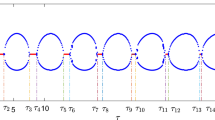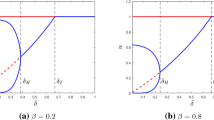Abstract.
A predator-prey metapopulation model with two identical patches and only migration of the predator is investigated. Local predator-prey interaction is described by the so-called Rosenzweig-MacArthur model, while the migration term of the predator is put in a nonlinear form, which is derived by extending the Holling time budget argument to migration. In particular, a dimensionless parameter θ is introduced to quantify the migration tendency of predators while they are handling their prey, which gives rise to a family of models connecting two extremes: predators have no inclination to migrate while handling prey (θ = 0) and standard diffusion (θ = 1). Various aspects of the model, including changes in the number and the stability of equilibria and limit cycles, are investigated. We then focus on the key question: “Does spatial structure lead to a substantial damping of the violent oscillations exhibited by many predator-prey models?”. It is known that the answer is “yes” if one adopts standard diffusion (θ = 1). However, we present substantial evidence that the answer is “no” if one takes θ = 0. We conclude that the migration submodel is an important constituent of a spatial predator-prey model and that the issue deserves scrutiny, both experimentally and theoretically.
Similar content being viewed by others
Author information
Authors and Affiliations
Additional information
Received: 26 June 2000 / Revised version: 4 May 2001 / Published online: 12 October 2001
Rights and permissions
About this article
Cite this article
Huang, Y., Diekmann, O. Predator migration in response to prey density: What are the consequences?. J Math Biol 43, 561–581 (2001). https://doi.org/10.1007/s002850100107
Issue Date:
DOI: https://doi.org/10.1007/s002850100107




